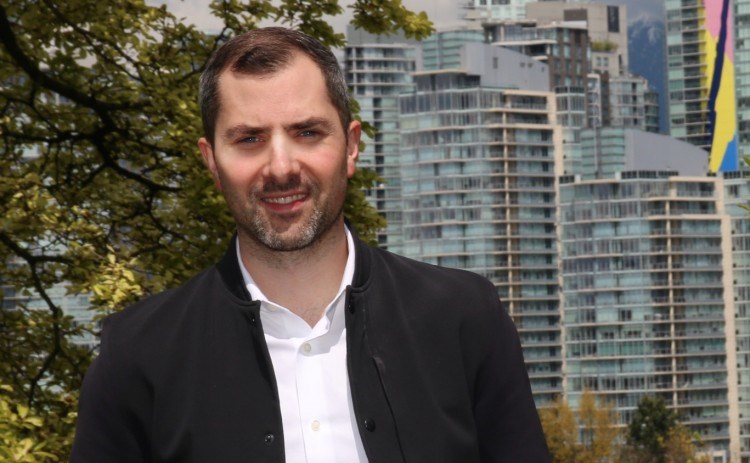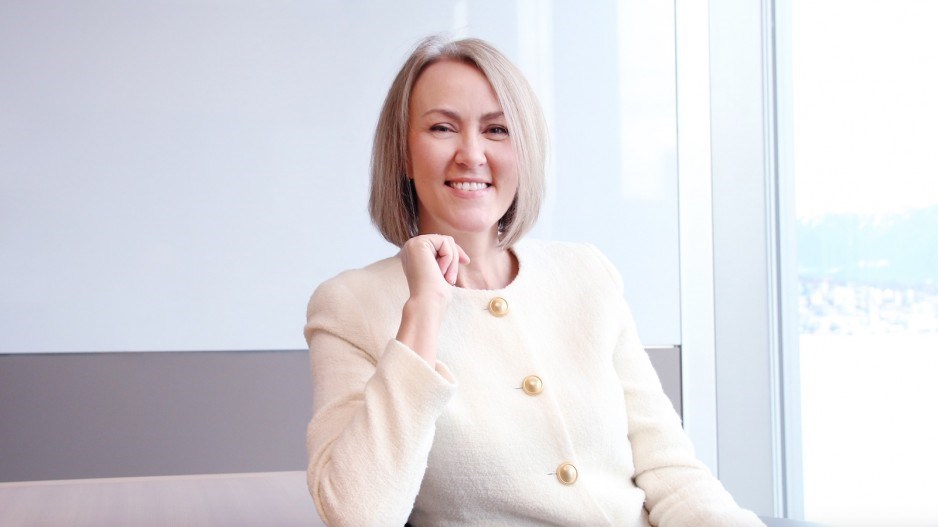British Columbians are struggling with debt – something that could be expected, given that inflation hit a 39-year peak of 8.1 per cent last June, interest rates are at 15-year highs and COVID-19-related financial support is long gone.
The trend shows more insolvencies and bankruptcies – mostly from people who have out-of-control unsecured debt, such as that on credit cards.
The pain extends, however, to those with secured debt, or loans with collateral.
Mortgage holders have seen monthly payments jump by thousands of dollars, while simultaneously seeing money go toward paying interest instead of building home equity.
Businesses too are feeling the pinch. Executives whose ventures loaded up on cheap loans when prime interest rates were around 2.5 per cent are looking at refinancing debt in the 6.7-per-cent range, thanks to Canada’s big banks yesterday hiking their prime rates. That is something that will add costs and eat into profits, if not exacerbate corporate losses.
Consumer indebtedness starts to soar
Licensed insolvency trustees are attracting new customers as more people find themselves sufficiently overwhelmed with credit card bills and seek help drafting legal agreements – consumer proposals to pay creditors or bankruptcies.
The Office of the Superintendent of Bankruptcy’s (OSB) most recent statistics show B.C. had 974 insolvencies in November. That’s more than any month since October 2019, when there were 1,077 insolvencies.
Insolvency tends to describe a financial situation where someone cannot meet their debt payments on time, though the OSB data for insolvencies also includes bankruptcies, which is when people declare that they cannot pay back debts to creditors at all.
The vast majority of the OSB-counted insolvencies (99 per cent) were for consumers, with the rest being for businesses.
Of the 963 consumer insolvencies in B.C. in November, 783 were consumer proposals, while the rest were bankruptcies.
“Consumer proposals are a legislative process that is only done through a trustee, and it’s under the Bankruptcy and Insolvency Act legislation,” explained Michelle Statz, a licensed insolvency trustee at Bromwich+Smith.
“People can try to do their own settlements, or have consultants help them facilitate settlements to their creditors, but a ‘consumer proposal’ is legislative.”
MNP Ltd. licensed insolvency trustee Lana Gilbertson said her first step is to try to get clients to sell assets in order to finance their debts, but by the time they see her, they rarely have sufficient assets to cover what they owe.
She also looks at her clients’ income and expenses to try to find sufficient money to pay down debt, after clients pay for their necessities. Consumer proposals usually involve creditors agreeing to accept a reduced amount of money, while temporarily waiving interest. The agreements can extend a maximum of five years.
“It gives someone some light at the end of the tunnel,” Gilbertson said.
Bankruptcy, in contrast, involves people who have no ability to pay their creditors.
“It often involves someone who is on a low fixed income, like a pension, or disability [benefits], or they might be single parents supporting a couple of children, and they just have no excess cash flow,” she said.
Insolvency trustees get paid before creditors, and they tend to charge about $1,800 for small bankruptcies, Gilbertson said.
“A real, prime difference between a consumer proposal and a bankruptcy is that someone going through bankruptcy is not allowed to hold a credit card while someone going through a consumer proposal can,” she said. “There’s a more absolute loss of credit in a bankruptcy.”
Those who are in bankruptcy have other constraints put on them as well. For example, they are not able to be a director of a limited company, or to sponsor new immigrants to Canada. They are also not able to perform some jobs, such as selling life insurance or mutual funds.
“There’s a variety of different regulatory bodies that might put restrictions on someone going through bankruptcy,” Gilbertson said.
“My understanding is that it would be very unusual for someone who is an ‘undischarged bankrupt to qualify for a mortgage. It’s not unheard of but it is very unusual.”
Bankruptcy goes on people’s credit reports and can be a red flag that will halt lenders from providing loans even after a person is no longer in bankruptcy.
Lenders must also only provide capital at a higher interest rate to a person who has officially been discharged from being in the state of bankruptcy.
The amount of time someone spends in bankruptcy before being discharged can be as little as nine months or up to around 21 months, depending on how much they earn, Gilbertson said.
“It can be longer than that if they have been bankrupt before,” she added.
She and Statz have watched their client numbers rise, and both expect that trend to continue, in part because of recent survey findings.
MNP’s most recent Consumer Debt Index survey, which Ipsos conducts quarterly, found that in December, 44 per cent of British Columbians said they were $200 or less from not being able to pay their debts, which would classify them as insolvent.
That is up from 42 per cent of British Columbians who felt that way in September 2022.
More British Columbians also said that they paid only the minimum balance on a credit card – 24 per cent, compared with 22 per cent in September, according to the survey.
Another 16 per cent said that they borrowed money that they could not afford to pay back quickly. That is up from 12 per cent who felt that way three months earlier.
The licensed insolvency trustee firm Sands and Associates on Jan. 16 released its 2022 BC Consumer Debt Study, which shed light on what has been pushing consumers into bankruptcy.
The main reasons cited for going into deep debt, according to those surveyed, were:
• Overextended credit due to general financial mismanagement (28 per cent)
• Paying for essential costs of living (20 per cent)
• Injury or illness (10 per cent)
• Marital or relationship breakdown (eight per cent)
• Job loss (six per cent)
Mortgage holders feeling the pain
Homeowners with variable-interest-rate mortgages spent 2022 watching accommodation costs spiral upward.
Oakwyn Realty broker Steve Saretsky told BIV that he usually sees clients agree to mortgages that are as large as banks are willing to lend.
That makes them vulnerable when interest rates rise.

Prime interest rates, which banks use to lend money to customers, have risen to 6.7per cent.
“At the lows, I had clients locking in five-year fixed mortgages at 1.4 per cent,” Saretsky said of prime rates during the pandemic.
His clients today can usually get variable-rate mortgages for slightly less than six per cent.
With about 20 per cent of all five-year fixed mortgages getting renewed each year, Saretsky expects a steady stream of homeowners facing shocks to their pocketbooks.
Typical suburban Metro Vancouver homes cost upwards of $1.5 million, and Saretsky said many homeowners have $1 million mortgages. Those people will have seen monthly payments jump by about $2,500 if they have variable-rate mortgages, he said before yesterday’s 25-basis-point Bank of Canada interest-rate hike.
Those with fixed-rate mortgages will incrementally see that increase in their mortgage costs when they renew, he added.
Mortgages are considered secured debt because they are made between two parties and the contract usually sets out what happens if the borrower is no longer able to meet monthly payments: The lender can foreclose on the home and sell it to recoup money owed, for example.
As a result, the borrower does not go insolvent or bankrupt.
There is a link, however, between homeowners struggling to pay bills and insolvency or bankruptcy.
When accommodation costs soar to levels that exceed homeowners’ incomes, people may turn to their credit cards, Gilbertson said.
She said that her clients tend not to be people who ring up massive credit card bills with no intention of ever paying them. Often, she said, their intentions all along are genuinely to pay off their debt.
When only minimum payments are made on credit card bills, however, interest can spiral quickly, given that credit card interest rates tend to exceed 20 per cent annually.
Deloitte said in its economic outlook last week that it expects hard times to continue for the real estate sector.
“The housing market outlook is bleak over the next two years,” Deloitte’s report stated.
“We anticipate the housing market will slowly start to recover in 2024 and 2025 as lower interest rates work to restore market demand.”

Investors and executives need to be wary of high debt
Luft Financial portfolio manager Elvis Picardo believes most investors could do more research than they do before putting their money in specific equities.
Some investors are dazzled by stock charts and may get excited about rising price momentum or, conversely, believe that a beaten-down equity is oversold, and is therefore a good buying opportunity.
Others can be swayed by the story around a company, and how its products are going to be in huge demand, or how its sector is one that will catch headwinds due to global news events and trends.
Picardo sees some merit in that insight, but he also digs to find fundamental indicators, such as a company’s revenue, earnings and assets.
Increasingly, Picardo looks at corporate debt levels and long-term corporate debt because interest rates have risen quickly and are expected to stay high for a while, he said.
Failing to consider how much debt companies have on their balance sheets can be a huge mistake for investors, he said.
Information from all Canadian equities is available for free on the System for Electronic Document Analysis and Retrieval (SEDAR) website.
“I would probably say that less than one in 10 retail do-it-yourself investors actually do that due diligence,” Picardo said of going to sedar.com to read earnings reports.
Picardo uses a formula to gauge whether a company’s debt load is too high: Total debt divided by total equity, to determine debt as a percentage of equity, or of a company’s assets, he said.
Another calculation is debt divided by a company’s earnings before interest, taxes, depreciation and amortization (EBITDA).
“EBITDA is widely used as a proxy for cash flow to assess whether a company can meet its debt obligations,” he said.
Exactly how much debt is appropriate for a company depends on its sector.
“A utility may have a total debt-to-equity ratio of, say, 1.1, or 110 per cent, which implies that it has $1.10 of debt for every $1 of equity. But because its cash flows are recurring and quite stable, that debt load should be easily serviceable,” he said.
“Conversely, a small technology company may have a debt-to-equity ratio of 0.5, but given the somewhat cyclical nature of the tech sector, that debt load may be an issue.”
Other portfolio managers are also keeping an eye on debt more than they did when interest rates were low and stable.
Thane Stenner, a senior portfolio manager and senior wealth advisor with CG Wealth Management Canada and USA, told BIV that he is wary of highly indebted companies.
“Avoiding companies with too high a level of leverage would be very prudent,” he said. “Look for high-cash-flow-generating companies.”
Dhruv Mallick, the head of high-yield fixed income and a portfolio manager at Leith Wheeler, said he likes to “stress-test” potential investment targets to see how they could handle a higher interest-rate burden. He then does the same calculation to see if the company could handle interest-rate hikes that are higher than expected.

Not all debt is bad, he said.
“From a capital structure, corporate-efficiency perspective, you want some debt on your books as a corporation because if you have zero debt, then you’re not necessarily getting the potential leverage out of the business that you could,” Mallick said.
Like Picardo, Mallick divides debt by EBITDA. He said he normally would not be interested in companies that have more than three to four times debt to EBITDA.
“It’s like when you’re looking to buy a house and the credit officer will chat with you and say, ‘OK, your income is “x,” so I can lend you “x” times three,’ or something like that,” he said, adding that the exact debt multiple can vary by sector.
Most companies’ stock prices had a rough 2022, particularly those that did not have much cash flow, and had a lot of debt.
High inflation and higher interest rates meant investors placed less value on each dollar of projected future earnings. That led to many companies’ stock prices being chopped in half, or worse.
Money-losing Vancouver companies that have high debt loads and no EBITDA include the former stock-market darling BBTV Holdings Inc. (TSX:BBTV).
Its initial public offering (IPO) generated $172.4 million for the company when shares started trading at $16 each in October 2020.
The company dubbed the offering as the largest-ever Toronto Stock Exchange IPO for a company with a sole female founder and CEO: Shahrzad Rafati.
Unfortunately for BBTV, its share price has since plummeted about 96 per cent, and it closed yesterday at $0.63.
The company lost more than $32.8 million in the 2021 calendar year, and another $31.5 million in the first three quarters of 2022. Its CFO Ben Groot said on the company’s most recent earnings call that BBTV on Sept. 30 had $45.3 million in long-term debt.
“It’s a non-starter for us to buy the debt or buy the stock for that matter,” Mallick said of BBTV.
Executives at highly indebted companies have a lot of options to slash costs to pay off debt.
Mallick said their first step could be to speak with bankers to see if those lenders could relax terms on loans.
Another option is to sell assets or divisions.
The trend toward allowing staff to work from home has the added perk that it enables some companies to save money by subleasing office space, or not renewing leases.
Cutting staff is another strategy, but it is one that could backfire, Mallick said.
“Employers are worried that they won’t be able to hire them back, given how tight the labour market is in Canada,” he said.




